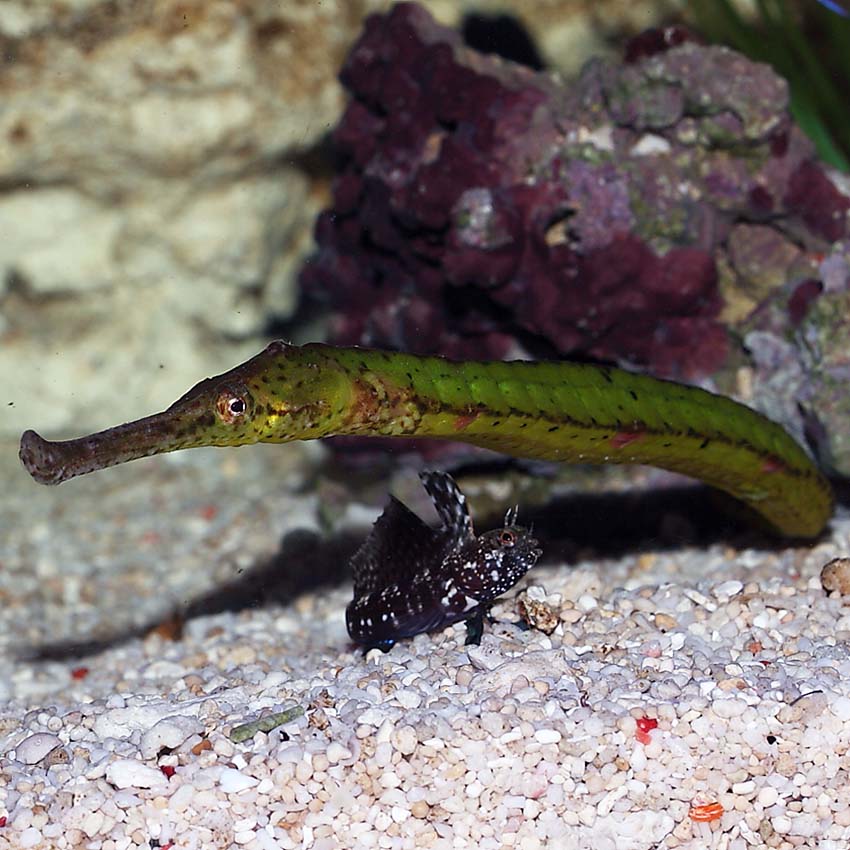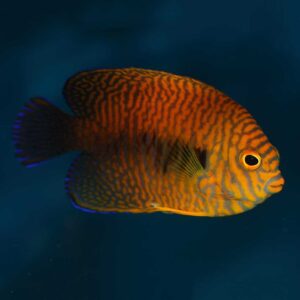Crocodile Pipefish, Syngnathoides biaculeatus, also go by the name Alligator Pipefish. These fish are great options for marine tanks. Crocodile pipefish can be green, yellow or brown depending on where they live.
Pipefish, Seahorses and sea dragons all belong to the Syngnathidae family. These ray finned fish have an odd body plan. As the name may suggest, pipefish have a long, slender body and elongated snout. Crocodile Pipefish use their dorsal fin for forward motion, while other ray finned fish use their tail and caudal fin. Instead of a caudal fin, Crocodile Pipefish have a prehensile tail like seahorses.
Crocodile or Alligator Pipefish Ecology.
In the wild, Crocodile Pipefish occur around: South Africa, Samoa, Japan and New South Wales, in the Indo-Pacific and Red Sea. They live in amongst algae and seagrasses in shallow, protected waters. they have been found in floating Sargassum as well.
These fish, like seahorses have an unusual reproduction. A pair perform a courtship dance. The time it takes can vary if their are a lot of predators about. After this the female will pass her eggs into a brood pouch on the male’s front. He will then fertilise and carry his eggs until the young emerge. Some pipefish will have a brood patch rather than pouch. Where the females lay adhesive eggs onto his surface.
Syngnathoides biaculeatus in the Aquarium.
It is important to have plenty of nooks or crannies where your Crocodile Pipefish can anchor themselves and feel at home.
Pipefish do best when fed a varied diet. Here they are eating frozen Mysis, frozen brineshrimp, frozen copepods, ocean nutrition fish eggs. We enrich all our frozen food with seachem garlic guard and Atvitol vitamins. These are great for keeping fish healthy by giving them with the nutrition often lost in frozen food. In doing so, these additives support their immune system and increase longevity.
In addition, Crocodile Pipefish will also eat live foods, such as copepods, that can be cultivated in attached refugium. Our Pipefish are adapted to tank life before being offered up for sale. Meaning they are eating frozen food when they leave us.
You can keep Crocodile Pipefish in pairs or groups. Keepers may wish to use a feeder or tweezers when feeding. Feel free to give us a call for advice if needed.





Reviews
There are no reviews yet.